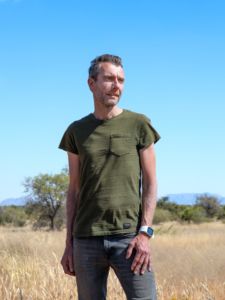Multi-million euro grant finally makes Nijmegen telescope in Namibia possible
-
 De sterrenhemel in Namibië. Foto: Elisa Maenhout
De sterrenhemel in Namibië. Foto: Elisa Maenhout
All systems are go for the construction of a Radboud telescope in Namibia, thanks to a grant of 3.45 million euros that was allocated by the NWO to the project this week. The radio telescope is supposed to take colour photographs and moving images of black holes.
‘It’s finally happening’, says astronomer and project director Marc Klein Wolt of the Radboud Radio Lab, referring to the construction of the cosmic measuring tool. ‘In December we already received 3 million euros through the European ERC grant. That covered 95 percent of the costs, but now we are completely set.’ Radboud University previously already guaranteed 12 million euros.
Black holes
Since 2018, Klein Wolt has been the driving force behind the telescope project, named the Africa Millimetre Telescope. This AMT is a collaboration between four Dutch astronomy departments, the University of Namibia, and several European partners, all under the watchful eye of Radboud University. Professor of astroparticle physics Heino Falcke is the lead researcher.
‘We will work with engineers from France to see which parts we can reuse’
The AMT should form the missing link in the global network of radio telescopes (which do not capture visible light, but radio waves) that were used to take pictures of black holes in 2019 and 2021 that went global. A telescope in Africa should make higher-resolution pictures possible, as well as videos. In addition, the project should give the local science community and education in Namibia a boost.

The NWO money will be used to expand the scientific team and to technically inspect the intended telescope. It is an old device that is currently still in Chile and being refurbished. Klein Wolt: ‘We will be working with the engineers from France who built it to see exactly which parts we can reuse to make it state-of-the-art again.’
Ideal location
Next month, the project members will travel to Namibia to look at two potential locations for the telescope. One of those is a research location where other telescopes and research buildings of the Max Planck Institute are already located. Klein Wolt: ‘In any case, we can construct the AMT there.’
But even the most ideal location in scientific terms is now getting closer financially, says the astronomer. That is the top of the difficult-to-reach Gamsberg mountain. ‘That location involves a lot more costs. We would have to construct not only a telescope, but also a whole research facility, and build a road.’ In addition, local farmers at the bottom of the mountain have objections to logistical and scientific activities on and near their territory.
If everything goes according to plan, the telescope could be up and running by 2025.
Translated by Jan Scholten



